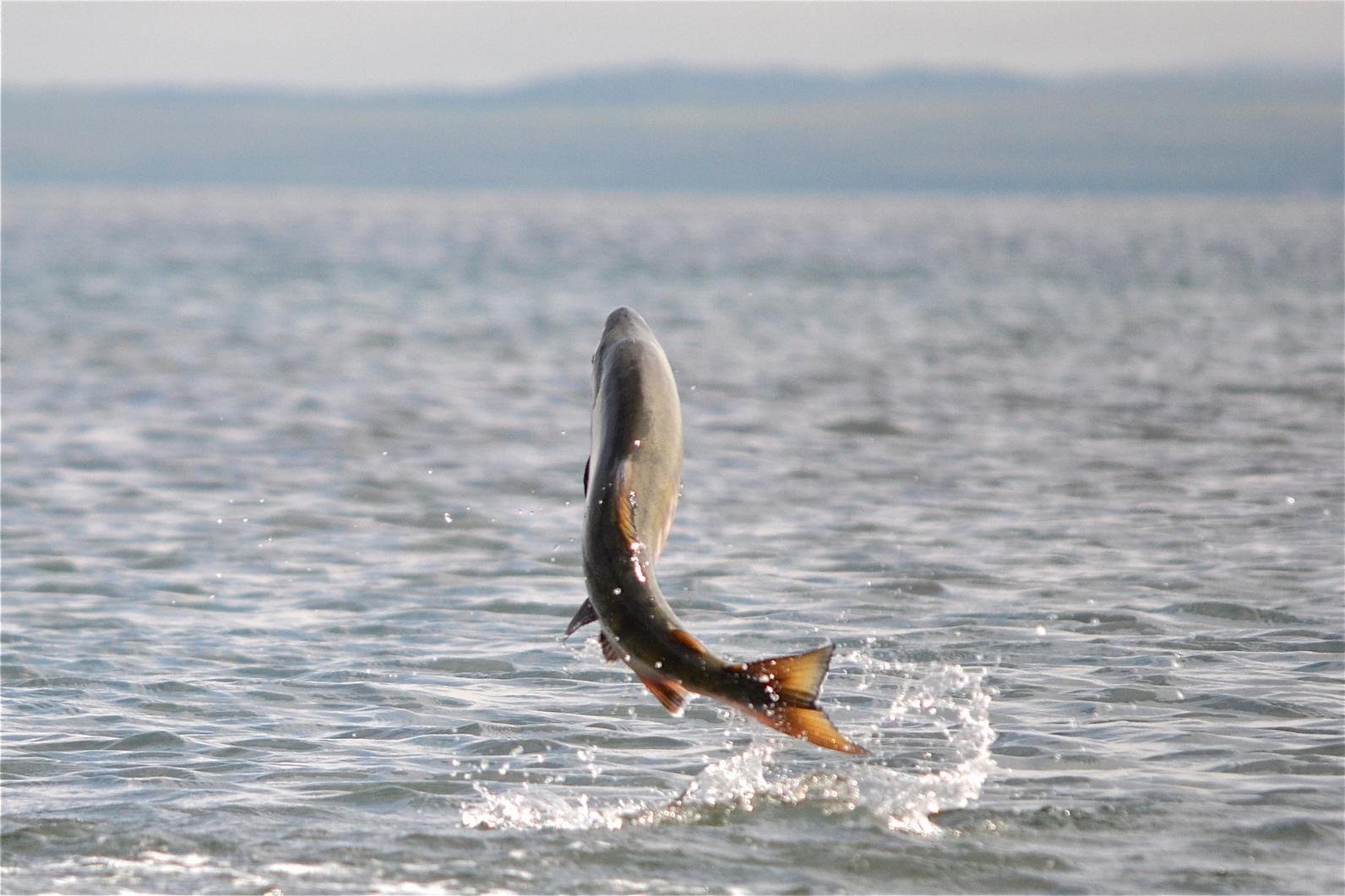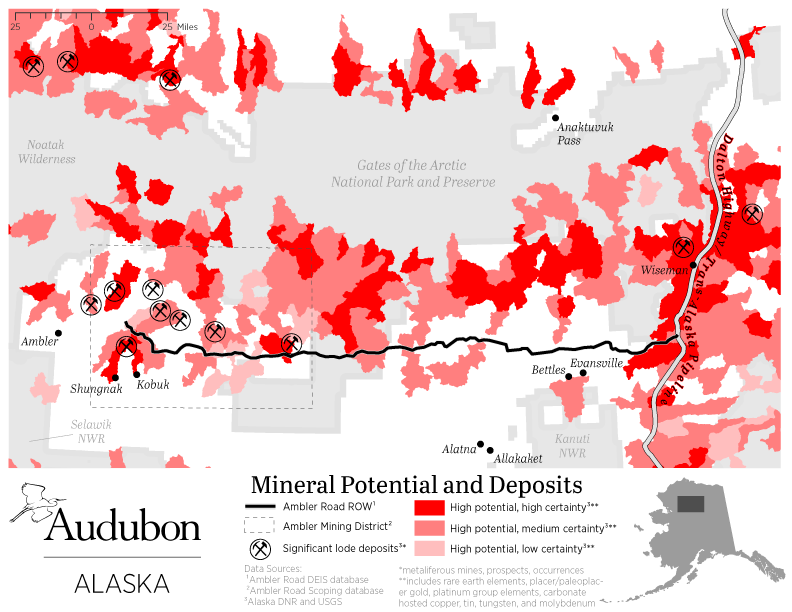
The Salmon of Ambler
Like air flowing in and out of lungs, salmon bring life deep into the tundra landscape around Ambler, feeding wildlife and people alike. The salmon and other fish in this region are facing a new threat, a proposed 211-mile road called the Ambler Road. The proposed road would open the region to mining and cross 11 major rivers in this region, including the Kobuk and the Noatak Rivers. These rivers and their connected streams and tributaries flow generally westwards into the Chukchi Sea within the greater Arctic Ocean. Over winter, tiny salmon hatch from the prior fall’s eggs and eventually begin their journey westwards to the sea, where they grow into adults. Each summer, mature adult salmon swim generally eastwards into the Ambler region, seeking out the very same natal streams where they were hatched.
Salmon Migration
The salmon’s remarkable journey connects the tundra to the ocean and enriches the surrounding landscape. Salmon eggs and the baby salmon (called alevins, fry, or fingerlings, depending on their developmental stage) are a feast for birds, mammals, and other fish – that is, if the predators can find the fish beneath the gravel or in the nooks and crannies of the river. When the baby salmon are mature enough to migrate to the ocean, they can spend up to several years at sea fattening up on the rich marine resources. On their return journey, these adult salmon provide food for bears, eagles, and people. After they spawn, their dying bodies fertilize the streams and the surrounding landscape with the nutrients they carried from the sea.

As migratory animals, salmon need healthy habitats in multiple areas. The rivers in the Ambler area provide both spawning beds and overwintering habitat, and thus are critical to the survival of salmon species. A female salmon will prepare a river nest (called a “redd”), where she lays eggs and covers them carefully with gravel. Disturbance of the gravel would kill eggs, and sediment in the stream would cover the gravel and prevent the female from building an adequate nest. When the eggs hatch, the tiny salmon fry may spend several years in the rivers and streams, depending on the species. Large glacial rivers in this region retain water flow during the winter and provide essential fish habitat for salmon fry and other fish.

Other Fish of Ambler
In the Ambler region, the salmon are joined by several other fascinating species of fish. Sheefish is a type of whitefish that can grow to 60 pounds and are only found in a few rivers in North America and Asia; they reportedly taste a little like lobster. Several other whitefish species live in rivers around Ambler, including broad whitefish, and humpback whitefish, and least cisco. Besides salmon and whitefish are other species. Arctic grayling sport a large dorsal fin on their back and are some of the most colorful fish in the rivers, with red fringes and iridescent dots. Northern pike can grow very large and have odd duck-billed faces; they are ferocious predators of other fish and even eat the occasional unlucky bird or mammal. Burbot are a type of freshwater cod, and are unique in that they spawn under the ice before the rivers and lakes thaw. These fish, along with the salmon, would be heavily impacted by a road cutting across river and streams, as well as the contaminants and sediment from increased mining.




